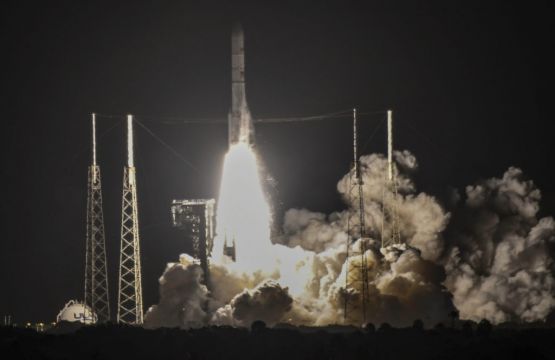The first US moon landing in more than 50 years was in jeopardy on Monday after a private company’s newly launched spacecraft developed engine trouble.
Astrobotic Technology, based in Pittsburgh in the US, was racing to turn the lander towards the sun so its solar panel could collect sunlight, as its battery power dwindled.
The problem arose about seven hours after Monday’s pre-dawn lift-off from Cape Canaveral Space Force Station in Florida.
United Launch Alliance’s Vulcan rocket provided the lift for Astrobotic’s lander, named Peregrine, putting it on a long, roundabout path to the moon.
Update #2 on Peregrine Mission One: pic.twitter.com/hS5QsAihh4
Advertisement— Astrobotic (@astrobotic) January 8, 2024
If the propulsion system is at fault it “threatens the ability of the spacecraft to soft land on the moon” on February 23, the company said in a statement.
“We continue to gather data and report our best assessment of what we see,” the company added.
Astrobotic was aiming to be the first private business to successfully land on the moon, something only four countries have accomplished.
A second lander from a company in Houston, Texas, is due to launch next month.
Nasa gave the two companies millions to build and fly their own lunar landers.
The first U.S. commercial robotic launch to the Moon successfully lifted off Jan. 8 on the first flight of @ULALaunch’s #VulcanRocket. @Astrobotic’s Peregrine Mission 1 lander is expected to reach the lunar surface in February: https://t.co/csvx73ZqgP pic.twitter.com/N7Mxiqi8GC
— NASA (@NASA) January 8, 2024
The space agency wants the privately owned landers to scope out the moon before astronauts arrive while delivering tech and science experiments for Nasa, other countries and universities as well as odds and ends for other customers.
The last time the US launched a moon-landing mission was in December 1972. Apollo 17’s Gene Cernan and Harrison Schmitt became the 11th and 12th men to walk on the moon, ending an era that has remained Nasa’s pinnacle.
The space agency’s new Artemis programme, named after the twin sister of Apollo in Greek mythology, looks to return astronauts to the moon’s surface within the next few years.
First will be a lunar fly-around with four astronauts, possibly before the end of the year.







